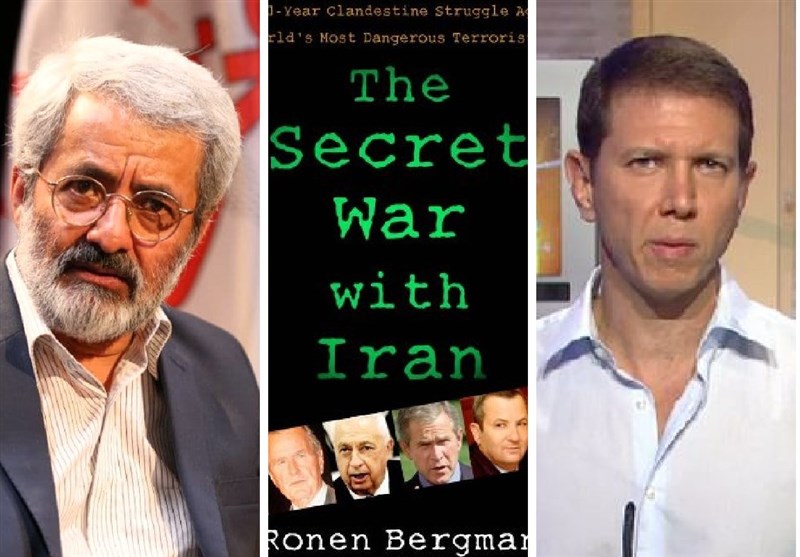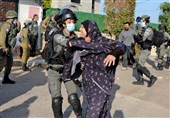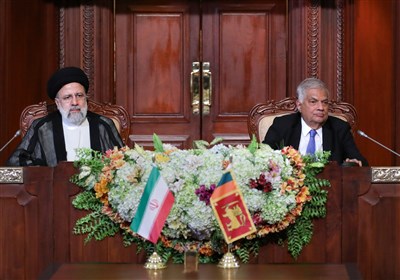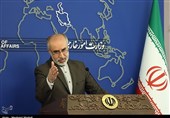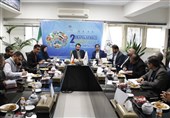An Argument against Ronen Bergman’s 'The Secret War with Iran' – 32
TEHRAN (Tasnim) – Bergman is explicit about the US’s unhappiness with the representative of Israel, who had pursued all policies of Tel Aviv and whose death meant too much, particularly after Washington’s scandalous failure in its hypocritical treatment of Iran, which the Zionists were involved in.
Iranian journalist and expert Abbas Salimi Namin has disproved the claims and opinions of Israeli analyst Ronen Bergman in the book ‘The Secret War with Iran’. ‘The Secret War with Iran’, written by renowned Zionist journalist Ronen Bergman, was published in 2008 by Simon & Schuster publishing company in the United States.
Born in 1972, Bergman is a graduate of Tel Aviv University in the Middle East political relations. He is a famous Zionist journalist and analyst in the military and security fields who has worked with Israeli newspapers ‘Haaretz’ and ‘Yedioth Ahronoth’, American dailies and weeklies such as ‘The New York Times’, ‘Newsweek’, ‘The Wall street Journal’, and British media groups including ‘The Guardian’ and ‘The Times’.
Bergman has been interested in topics relating to the enemies of the Zionist regime (particularly Iran, Hezbollah and the Palestinian resistance groups), as well as subjects on the history of the Israeli regime’s assassination operations, which are cited in his recent book ‘Rise and Kill First’.
In an interview with Persian TV channel ‘Iran International’, Bergman has pointed to the Iranian nuclear program and the issues surrounding it -particularly the Zionist regime’s secret attempts to halt the process of nuclear activities in Iran and assassinate Iranian scientists. He has also cited ex-CIA chief Michael Hayden as saying that the assassination of nuclear scientists is the best way to impede Iran’s growing process in that field, and has implicitly held Israel responsible for it.
In the book ‘The Secret War with Iran’, Bergman has written a history of encounters between Iran and the Zionist regime, while the bulk of the book relates to the Lebanese Hezbollah -Iran’s main ally in the battle against the Zionist regime since its formation until the 33-day War- focusing on the role of Martyr Imad Mughniyeh.
His book also includes sections about the final years of the Pahlavi regime and victory of the Islamic Revolution in Iran, short periods of the war imposed by the Ba’thist party of Iraq on Iran (focusing on the McFarlane affair), Iran’s role in supporting the Palestinian groups, and the Iranian nuclear program.
Bergman’s multiple undocumented and untrue comments as well as personal and purposeful analyses (with the main purpose of displaying Israel’s power, especially in a competition with the US) that have repeatedly come in his book make a critical review of the book necessary for Iranian readers.
Director of the Iran History Studies and Compilation Bureau, Abbas Salimi Namin, has written an extensive criticism in a book about ‘The Secret War with Iran’. Born in 1954, Salimi Namin is an experienced journalist and a renowned Iranian researcher in history and political sciences who has published many articles and books.
About ‘The Secret War with Iran’
Part 32:
Washington was also sensitive to the Zionist-affiliated dealers. Therefore, we have to focus on Qorbanifar’s role and the author’s conflicting allegations. In one passage, the author claims Qorbanifar was close to Hashemi Rafsanjani. “ran approached Israel through two go-betweens, Manoucher Qorbanifar, the Iranian arms dealer who was close to Rafsanjani, and Adnan Khashoggi, a Saudi billionaire in the same line of business, who had maintained secret contacts with Israel. The Iranians wanted Israel to sell them arms and to mediate between them and the Americans. Israel, incidentally, was aware that as early as 1981 Qorbanifar had tried to establish contact with the Americans, but had been marked by the CIA as an untrustworthy individual.” (Chapter 8, p. 146)
Bergman adds: “When Qorbanifar arrived in Israel, using a Greek passport, one of the many that he possessed, accompanied by his colleague and helper, Cyrus Hashemi. They closed a deal, code-named “Cosmos,” for a $50 million sale of combat equipment to Iran.” (Ibid)
These two parts are conflicting. The first allegation that Qorbanifar was close to Rafsanjani lacks any basis. He was rather a dealer on behalf of Israel. Robert Dreyfus has said that Cyrus Hashemi was also a Mossad agent (he was killed in suspicious circumstances). Therefore, Iran had no ties with Israel and was even fully unaware of the arms dealers’ secret ties with the Zionists.
Bergman also ties Qorbanifar to Israeli intelligence agent in Shah-era Iran Nimrodi. “The Americans did not exactly trust the Israeli representatives. Casey asked the attorney general, Edwin Meese, in writing, to maintain “electronic surveillance” over “two Iranian agents” due to arrive in Washington for negotiations on the release of American hostages. He named the two Iranian agents as “Mr. Asgari” (a pseudonym for Qorbanifar) and Yaakov Nimrodi.” (Chapter 8, pp. 150-151)
Therefore, Qorbanifar who was in close contact with Shah’s secret police Savak and Cyrus Hashemi and was a key figure in the aborted Nojeh coup was not trusted by Iranian officials. Even the Americans could not trust him and the Israeli prime minister had to remove both on the pretext of their affiliation with the private sector. “Prime Minister Peres made the decision because the prime minister felt he was losing control over the operation, and that he could not rely on two private businessmen. Nir was the natural replacement… Nimrodi fought the decision, arguing that Nir had undermined him and worked against him, but the arguments fell on deaf ears.” (Chapter 8, p. 152)
Nir was not a well-known person. He finally managed to convince Washington to accept Qorbanifar’s role because unlike Nimrodi who was a Zionist known to Iranians, the so-called dealer’s ties with the Zionists were not clear enough. “By the strength of his personality, Nir managed to persuade the Americans to stick with the operation, and to take the path proposed by Qorbanifar, despite the fact that he had already been declared a liar and a con man by the CIA.” (Chapter 8, p. 155)
That shows the Zionists found more room to maneuver because on the one hand Nir was managing the project as an American while on the other hand, Zionism-affiliated dealers were in charge of executive affairs. Despite Bergman’s allegations, Israel apparently is not ready for such dialogue, but it would make the biggest economic and political achievement by running minimum risk. The author openly crosses a line on his own allegations of request for Israeli mediation when he relates the first meeting between Iranian and US officials (See Chapter 8, p. 146). “On February 25 a meeting took place in Paris between North, Nir (who was presented as an American and carried a fake American passport), a high-ranking CIA official, and Mohsen Kangarlu, an aide to the Iranian prime minister.” (Chapter 8, p. 157)
If there was the slightest truth in such request, the representative of Israel should have attended to exercise his intermediary role. This cover-up indicatives the Iranians’ sincerity in refusing to recognize the occupiers of Palestine and that no talks were held with the Zionist regime regarding supply of arms dating from the Pahlavi regime. Otherwise, there was no reason for Nir to cover up his real identity and present himself as an American. Giving such privilege to Israel so that his representative would attend talks just because of the Zionists’ profiteering spirit gave rise to consequences and led to Washington stepping up pressure on them so that the dealer would no longer be a Zionist gent. “…at a meeting in Paris on March 8, North and Nir decided that they would each examine other channels as possible alternatives to Qorbanifar.” (Chapter 8, p. 158)
These sensitivities are such in a letter to Israeli Prime Minister Shimon Peres, Nir refers to US attempts to set Israel outside talks. “On February 28, Nir sent a small handwritten note to Peres. Referring to an upcoming meeting to be held on the Iranian island of Kish to discuss the next stage of the operation and apprehension over the CIA trying to exclude Israel: “At a meeting in Frankfurt, North tells me that it would be worth it for Shimon to write a letter to Reagan mentioning participation in the meeting because he is worried that the CIA wants to exclude us from the picture and to ignore the president’s decision about our hostages.”” (Chapter 8, p. 157)
In the final pages of this chapter, Bergman is more explicit about the US’s unhappiness with the representative of Israel. He had definitely pursued all policies of Tel Aviv and his death meant too much, particularly after Washington’s scandalous failure in its hypocritical treatment of Iran, which the Zionists were involved in. “Was Amiram Nir the “man who knew too much”? Was he murdered because of that meeting in the King David Hotel? Or was the plane crash in Morales in southern Mexico in December 1988 nothing but the accident that the Mexican police claimed it was? There is no definitive proof that Nir was eliminated. Three months earlier, however, he had told one of the people closest to him that he had met with two high-ranking members of the U.S. intelligence community, who said they represented the vice president and Republican candidate for president—George Bush. They asked Nir what he would say about that meeting at the King David, if and when he was questioned about it during the presidential campaign. Nir told them he would keep the affair’s secrets locked in his bosom forever.” (Chapter 8, p. 165)
The author could not more expressively accused the US in the murder of Nir, who was the Zionist agent. He, however, forgets that he has already described him as a joint victim of Israel and the US. It means that in a bid to get out of crisis, the wolves needed someone most involved in the Irangate affair to lay the blame for the failure on him and then eliminate him. “Not only in the United States, but also in Israel, Nir was thrown to the dogs as the “fall guy” in the scandal. Most of the Israeli media related to him as an adventurer who had dragged the governments of the United States and Israel into an international political imbroglio.” (Chapter 8, p. 163)
In other words, those who created the scandal had no option but to reduce to silence someone in a bid to prevent any disclosure of information. The author has admitted to it by implication. “Despite everything that has been written about Irangate, there is a great deal that remains hidden….Most of their evidence and conclusions remained classified. The Israeli role remains largely undisclosed, including that of Amiram Nir.” (Chapter 8, p. 143)
